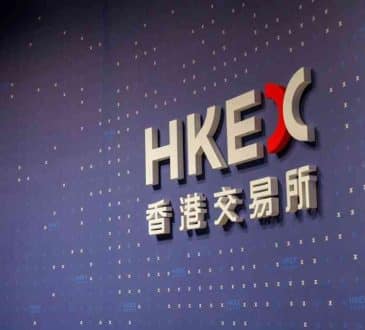4 Reasons You Need Meeting Minutes, Even For Informal Meetings

The meeting is over, so now it’s time to get back to work, right? Wrong. Any good meeting, even an informal check-in, deserves to be memorialized. But adding one more step to your packed schedule is the last thing you need right now.
This may be the internal dialogue playing when the thought of drafting up meeting minutes elbows its way in. Like it or not, meeting minutes are an important business tool that smart leaders don’t skip. Minutes can often be your saving grace, making their creation an essential task for every meeting.
- Decisions Require Documentation
Sometimes, a meeting can go on and on, ebbing and flowing between new ideas and debates. Once the dust settles, it’s easy for attendees to pivot to a new agenda item without recording decisions. However, if you know you need to keep meeting minutes, you’ll likely feel compelled to call for a pause.Structured meeting agendas and minutes encourage thoughtful meeting behavior, which supports commitment to key decisions or a conscious pause. Even if a team isn’t ready to move forward, the deliverable of minutes helps guide them to vocalizing and committing. Establish a “parking lot” for ideas that have merit but aren’t ready to be acted on. Memorializing these thoughts can help them have a chance at life later in the current project or in a second iteration.
As you draft your minutes, identify key speakers and approvers by name and title. This practice can help you keep track of who said what and attribute responsibility to the right participant. Leave space for any additional approvals needed, making note of who is involved and when their input is due. If key leaders need to be brought up to speed later, this information can serve as a helpful reminder.
- Assignments Can Be Recorded and Clarified
When you leave a meeting, you know that everyone in attendance took flawless notes, right? Unfortunately, what attendees hear, retain, and write down varies greatly, as does how they best absorb information.Workplaces are full of different learners, and traditional meetings might not always jibe with how a colleague works best. This is where meeting minutes can be both a tool and an act of inclusivity.For example, some colleagues may be able to hold their own in a lively discussion about strategy. But after the meeting, they struggle to remember key assignments, details, and deliverables. With meeting minutes to review, confirm, or question, all attendees can agree on what was committed to. Key dates, expectations, and responsible parties are now on the record.
- Project Managers, Non-Attendees, and Stakeholders Need a Reference
You can’t realistically make every meeting, nor should you be expected to. Workplaces are known for packing the day with meetings, making your decision to attend one crucial. If your schedule is too slammed to sign on, meeting minutes can catch you up once you catch your breath.Project managers can also use meeting minutes as a reference when they document other project files. Gantt charts, A3s, and project management software can more easily be updated with meeting minutes as a guide. If a review of the minutes reveals a gap, the project manager can quickly add it to the project team chat or upcoming meeting agenda.
Executive leaders and directors often like to have access to meeting minutes, especially for high-profile projects. Keep these important files in your project folder and offer unfettered access to your leaders. And if you’re asked to report on the project’s status out of the blue, you’ll have meeting minutes at the ready.
- Minutes Can Decrease Confusion Later On, Saving Time and Money
Lack of clarity can lead to missed deadlines, poor work quality, and low morale. When your team’s lost focus, it can be hard to get even basic work done. Treat meeting minutes as a way to break down barriers to understanding. Aim to include necessary details in a consistent format, linking to reference documents and folders to improve access and clarity.With robust minutes, you can identify agreed-upon expectations, risks, and next steps. Team members can begin to work on their contribution to the project confident that they’re doing the right thing. In addition, you have an easy reference guide for the next meeting’s agenda. Try to mirror your minutes to your organization’s agenda format to improve efficiency and consistent design.Clear meeting minutes can also reduce the need for check-ins or clarification requests. While your colleagues surely are happy to answer ad hoc questions, every chat or cubicle conversation costs money. Even a 15-minute session can result in lost productivity for all participants. If you’ve done your job well, meeting minutes can be the reference guide that takes the place of time-squandering convos. Team members will confidently embark on their work without unnecessary disruption or confusion.
Create a Template and Procedure to Make Minutes Easy
Any good business tool can benefit from a template and complementary procedure. Review your organization’s needs and consider the components of meeting minutes that suit your business. Create a template and get the necessary approvals from key leaders before you deploy it.
Provide training on how and when to use the template, supported by a clearly specified procedure. With structure, buy-in, and training, your team can leverage the power of meeting minutes to pursue their best work.
Have you read?
Five Invisible Components of Effective DEI Work That All CEOs Must Consider by Laura L. Kangas.
A Conversation with Seaquake Crypto CEO Andrew Katz.
Persistence, Integrity, and Active Listening: Vinod Gupta on the Top Three Skills Needed to be a Successful Entrepreneur.
Why We Must Move Beyond Performance as a Top Criterion for Determining Leadership Potential by Dr. Kimberly Janson.
A new era of leadership – The DNA of the Chief Data Officer by Lance Mortlock.
Add CEOWORLD magazine to your Google News feed.
Follow CEOWORLD magazine headlines on: Google News, LinkedIn, Twitter, and Facebook.
This report/news/ranking/statistics has been prepared only for general guidance on matters of interest and does not constitute professional advice. You should not act upon the information contained in this publication without obtaining specific professional advice. No representation or warranty (express or implied) is given as to the accuracy or completeness of the information contained in this publication, and, to the extent permitted by law, CEOWORLD magazine does not accept or assume any liability, responsibility or duty of care for any consequences of you or anyone else acting, or refraining to act, in reliance on the information contained in this publication or for any decision based on it.
Copyright 2024 The CEOWORLD magazine. All rights reserved. This material (and any extract from it) must not be copied, redistributed or placed on any website, without CEOWORLD magazine' prior written consent. For media queries, please contact: info@ceoworld.biz
SUBSCRIBE NEWSLETTER











